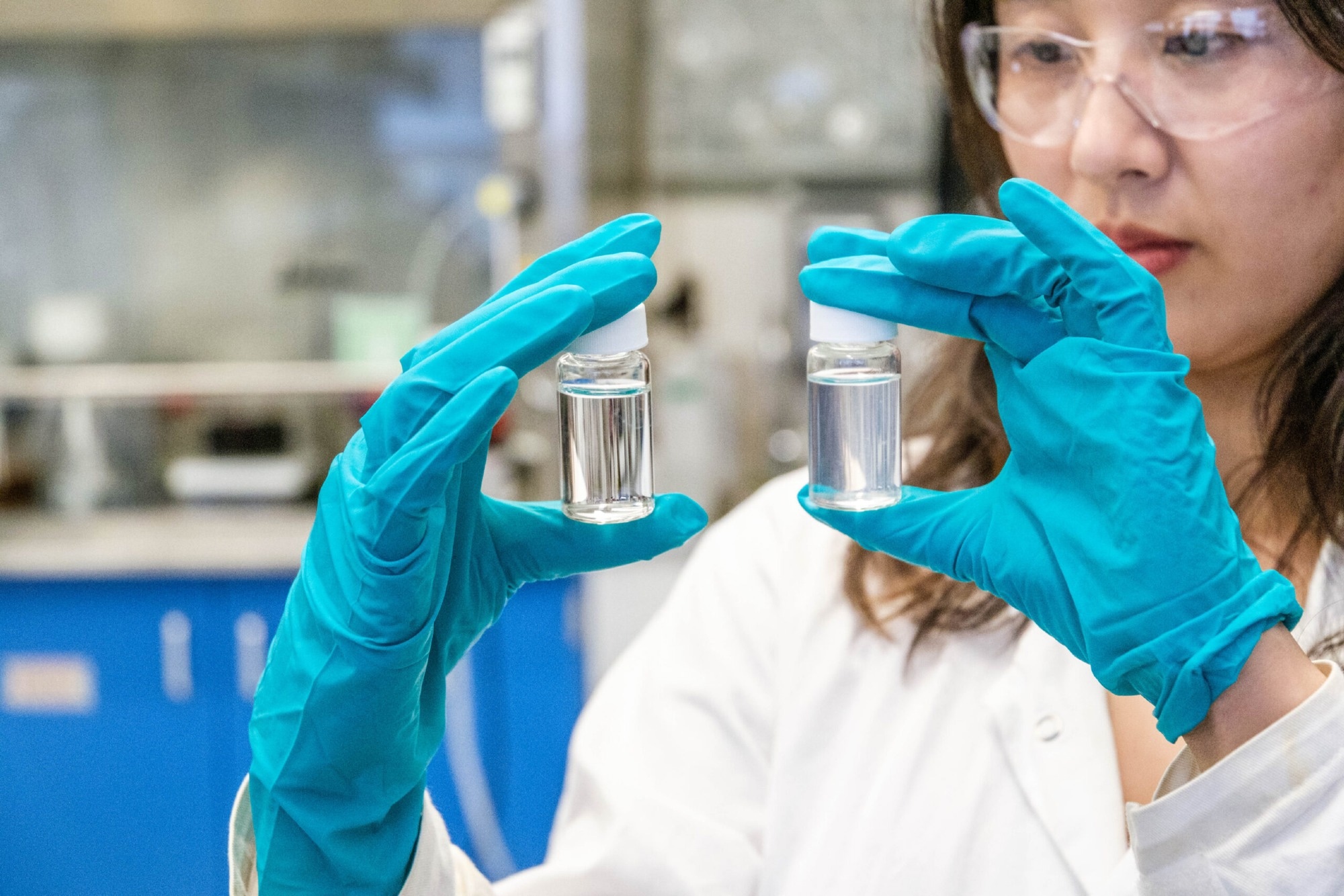Plants could be the solution to the impending threat of microplastic pollution. Researchers at UBC’s BioProducts Institute discovered that adding tannins—natural plant compounds that cause the mouth to pucker when they bite into an unripe fruit—to a layer of wood dust can create a filter that traps nearly all microplastic particles in water.
 UBC postdoctoral researcher Dr Tianyu Guo is part of a team that developed a wood dust-based filter for removing microplastics from water. Image Credit: UBC Forestry/Jillian van der Geest.
UBC postdoctoral researcher Dr Tianyu Guo is part of a team that developed a wood dust-based filter for removing microplastics from water. Image Credit: UBC Forestry/Jillian van der Geest.
While the experiment is still in the laboratory stage, the team is confident that the solution can be easily and cheaply scaled up once they find the right industry partner.
Microplastics are small bits of plastic debris that form as a result of the breakdown of consumer goods and industrial waste. Dr. Orlando Rojas, the institute’s scientific director and the Canada Excellence Research Chair in Forest Bioproducts, says keeping them out of water supplies is a huge challenge.
He cited one study that discovered nearly all tap water is polluted by microplastics, as well as other research that predicts more than 10 billion tons of mismanaged plastic waste will be released into the environment by 2025.
Most solutions proposed so far are costly or difficult to scale up. We’re proposing a solution that could potentially be scaled down for home use or scaled up for municipal treatment systems. Our filter, unlike plastic filters, does not contribute to further pollution as it uses renewable and biodegradable materials: tannic acids from plants, bark, wood and leaves, and wood sawdust—a forestry byproduct that is both widely available and renewable.
Dr. Orlando Rojas, Scientific Director, The University of British Columbia
Captures a Wide Variety of Plastics
The researchers examined microparticles released from popular polypropylene tea bags for their research. They discovered that their method (named “bioCap”) trapped 95.2 to 99.9% of plastic particles in a column of water, depending on the type of plastic. When assessed in mouse models, the method was shown to avert microplastic accumulation in the organs.
Dr. Rojas, a UBC professor of wood science, chemical and biological engineering, and chemistry, adds that it is hard to capture all of the different types of microplastics in a solution because they vary in size, shape, and electrical charge.
There are microfibres from clothing, microbeads from cleansers and soaps, and foams and pellets from utensils, containers, and packaging. By taking advantage of the different molecular interactions around tannic acids, our bioCap solution was able to remove virtually all of these different microplastic types.
Dr. Orlando Rojas, Scientific Director, The University of British Columbia
Collaborating on Sustainable Solutions
Dr. Junling Guo, a Professor at the Center of Biomass Materials and Nanointerfaces at Sichuan University in China, collaborated to create the UBC method. The other contributors were Marina Mehling (she/her), a Ph.D. Student at UBC’s Department of Chemical and Biological Engineering and Dr. Tianyu Guo (she/her), a Postdoctoral Researcher at the BioProducts Institute.
Microplastics pose a growing threat to aquatic ecosystems and human health, demanding innovative solutions. We’re thrilled that the BioProducts Institute’s multidisciplinary collaboration has brought us closer to a sustainable approach to combat the challenges posed by these plastic particles.
Dr. Orlando Rojas, Scientific Director, The University of British Columbia
Journal Reference:
Yu, W., et al. (2023). Flowthrough Capture of Microplastics through Polyphenol‐mediated Interfacial Interactions on Wood Sawdust. Advanced Materials. doi.org/10.1002/adma.202301531.